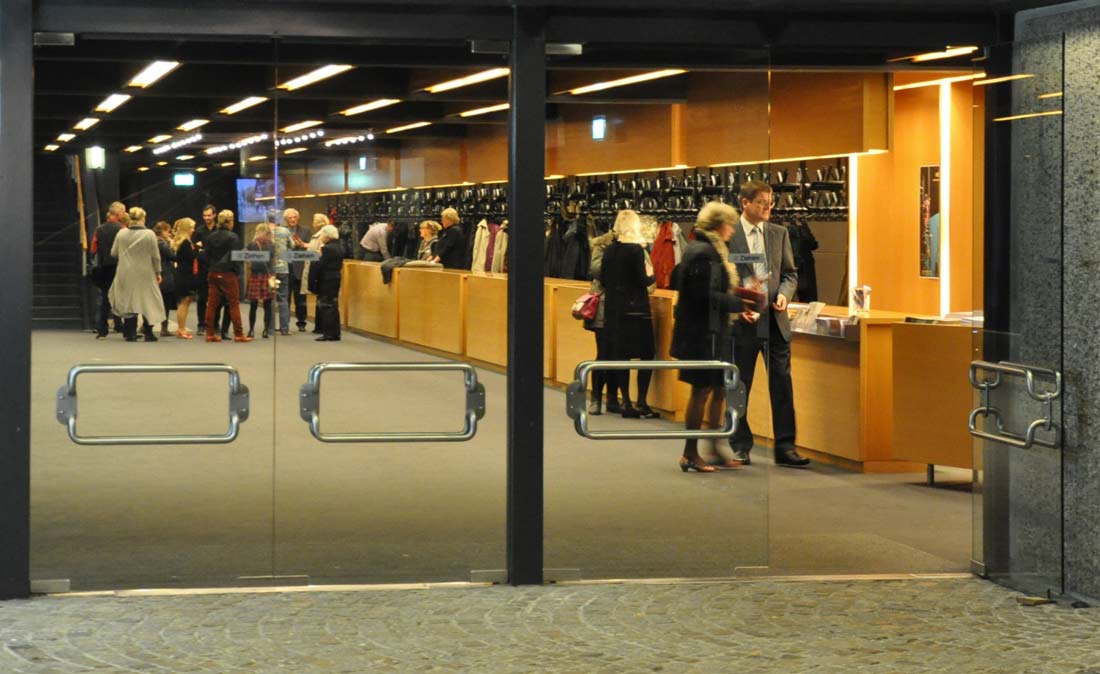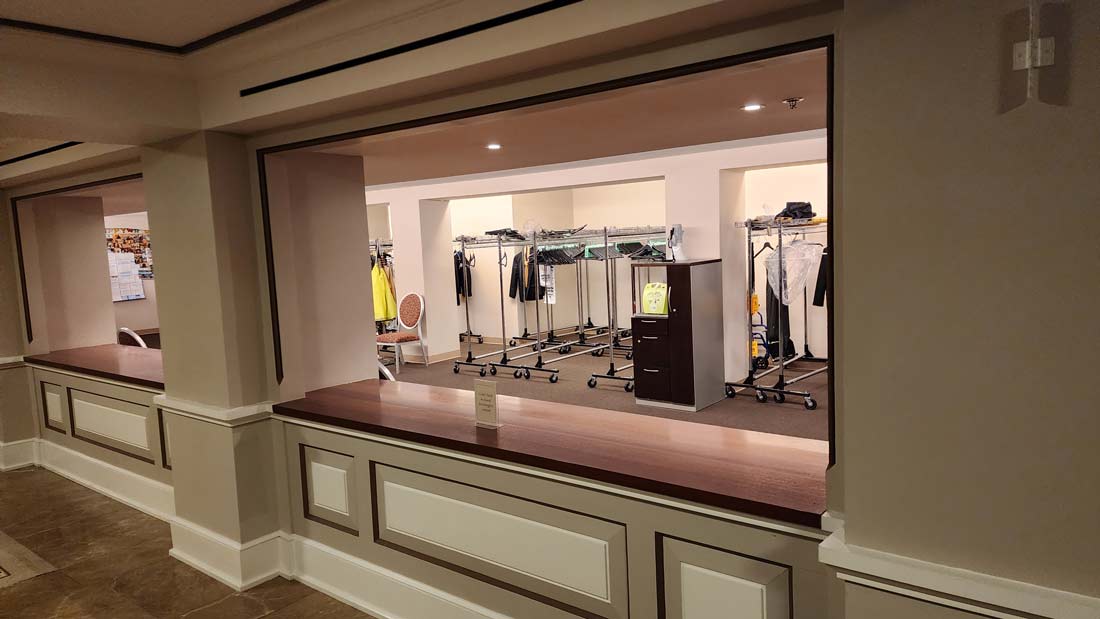Did You Know – Checking in on the Coat Room
What happened to the quaint old Coat Room? When did backpacks, shopping bags, and briefcases start to outnumber coats and umbrellas? Theatre consultants love to argue about things like this, but the votes are in. We should call it as we see it, and we now introduce to you the Check Room. Yes, this once modest space, usually tucked into the corner of the lobby or down a hallway, still supports the transactional activity we know so well, of handing over an item, receiving a numbered ID ticket, returning several hours later with that ticket, rewarding the tip jar, and regaining the checked item. Some things never change.
But other things do change. This room has had to learn a lot of new tricks. The Check Room is often where the public can request a hearing-assist device or a booster seat, where boxes of programs await pick-up by the usher staff, and where lobby furniture, ropes and stanchions, and first-aid equipment are often stored. Some Check Rooms are self-service, providing coat racks and hangers on the honor system. Old-style lockers are becoming increasingly rare because, let’s face it, who carries quarters anymore? A better choice for today’s audiences, for self-service check rooms, are the type of lockers that allow users to set their own combinations (very common in gym locker rooms). Whether attended or self-service, the new Check Room requires many more storage cubbies, or lockers, in addition to coat racks. In some jurisdictions, a secure weapons cabinet may be required.The size of the Check Room is still largely a function of the number of patrons being served. For a smaller venue, the Check Room may have a single attendant meeting the public across a Dutch-door while a larger venue may have a long counter with multiple attendants. The number of coats that are checked may be dependent on the severity of the local weather. However, geographic location now has less bearing than in the past, as so many other non-clothing items are being checked: backpacks, boots, shopping bags, strollers, umbrellas, big hats, To-Go items from dinner before the show – and what about cell phone chargers or a refrigerator for breast milk?

A more modern coat check, Oldenburg Staatstheater. Photo by Andreas Praefcke
In the meantime, the humble Check Room must roll with the punches and be ready to accommodate anything the audience wants to part with in order to more fully enjoy the performance – and that’s the ultimate goal, after all.
By Robert Long, FASTC and Robert Shook, FASTC
Disclaimer: Any views or opinions expressed in this article are solely those of the author and do not necessarily represent those of the American Society of Theatre Consultants. This article is for general information only and should not be substituted for specific advice from a Theatre Consultant, Code Consultant, or Design Professional, and may not be suitable for all situations nor in all locations.



